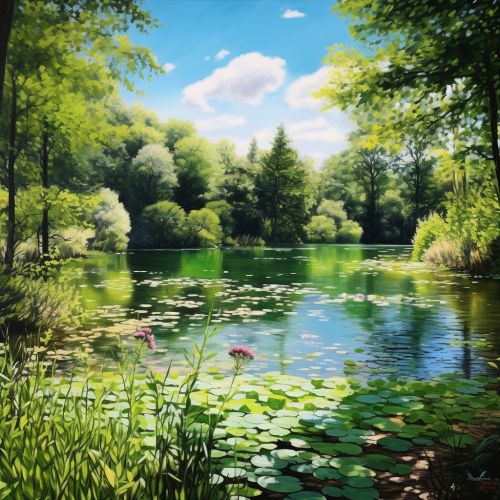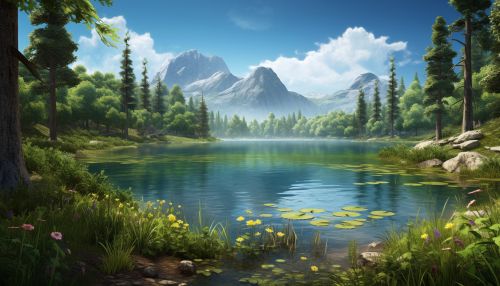Freshwater Biome
Overview
The Freshwater Biome is one of the major biomes on Earth, characterized by its low salt content, usually less than 1%. This biome includes lakes, rivers, ponds, streams, and wetlands. It is a vital part of the Earth's ecosystem, providing habitat for a diverse range of plant and animal species, and playing a crucial role in the water cycle.
Characteristics
Freshwater biomes are distinguished by their significantly low salt concentration, typically less than 1%, compared to marine biomes which have a salt concentration of around 3.5%. The freshwater biome is further divided into two main types: lotic (flowing water) and lentic (still water).


Lotic Ecosystems
Lotic ecosystems refer to systems with moving water. This includes rivers, streams, and creeks. These ecosystems are characterized by their dynamic nature, with water constantly in motion, creating unique habitats and ecological challenges for the organisms that inhabit them.
Rivers and Streams
Rivers and streams are bodies of water that flow in one direction. They originate from springs or glaciers and flow into the ocean, a lake, or another river. The organisms found in rivers and streams have adapted to the constant flow of water. For example, many fish species have streamlined bodies to reduce water resistance.
Lentic Ecosystems
Lentic ecosystems refer to bodies of water that are still, such as lakes, ponds, and wetlands. These ecosystems are characterized by their lack of water movement, creating different habitats and ecological challenges compared to lotic ecosystems.
Lakes and Ponds
Lakes and ponds are bodies of water surrounded by land. They vary greatly in size, with ponds being smaller and shallower than lakes. The organisms in lakes and ponds are adapted to still water. For example, many aquatic plants have air spaces in their stems and leaves to help them float.
Wetlands
Wetlands are areas of land that are saturated with water, either permanently or seasonally. They include marshes, swamps, and bogs. Wetlands are incredibly biodiverse, providing habitat for a wide range of plant and animal species. They also play a crucial role in water purification and flood control.
Biodiversity
The freshwater biome is home to a diverse range of species. This includes a variety of fish, amphibians, reptiles, birds, and mammals. Many of these species are adapted to the unique conditions of the freshwater biome, such as the low salt concentration and the varying flow of water.
Threats and Conservation
Like all biomes, the freshwater biome faces a number of threats. These include pollution, habitat destruction, and climate change. Conservation efforts are crucial to protect this biome and the species that inhabit it. This includes efforts to reduce pollution, protect habitats, and mitigate the impacts of climate change.
